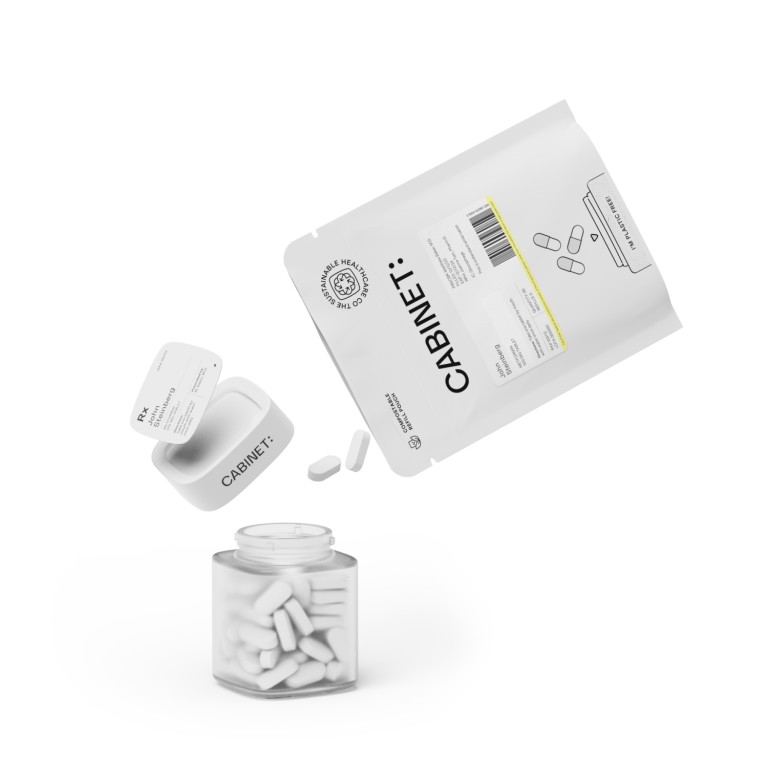Metoprolol Tartrate and Metoprolol Succinate are both medications commonly prescribed for various heart conditions. While they belong to the same drug class, they have distinct characteristics that set them apart. Understanding the differences between these two formulations is crucial for patients and healthcare professionals in order to make informed decisions regarding treatment options.
Understanding Metoprolol: An Overview
Before diving into the differences between Metoprolol Tartrate and Succinate, it's important to have a general understanding of what Metoprolol is and how it plays a role in treating heart conditions.
Metoprolol is a beta-blocker medication that works by blocking the effects of adrenaline on the heart, reducing heart rate and blood pressure. It is commonly prescribed for high blood pressure, angina (chest pain), and heart rhythm disorders. Metoprolol helps to improve symptoms, reduce the risk of heart attacks, and manage various heart-related conditions.
But what exactly does Metoprolol do in the body? When adrenaline is released, it binds to beta receptors in the heart, causing an increase in heart rate and blood pressure. This can be problematic for individuals with heart conditions, as it puts extra strain on the heart. Metoprolol works by selectively blocking these beta receptors, preventing the effects of adrenaline from taking place. By doing so, it reduces the heart rate and blood pressure, allowing the heart to work more efficiently and with less strain.
What is Metoprolol?
Metoprolol is a beta-blocker medication that works by blocking the effects of adrenaline on the heart, reducing heart rate and blood pressure. It is commonly prescribed for high blood pressure, angina (chest pain), and heart rhythm disorders. Metoprolol helps to improve symptoms, reduce the risk of heart attacks, and manage various heart-related conditions.
Metoprolol comes in two different forms: Tartrate and Succinate. While both forms are effective in treating heart conditions, they have some differences in terms of dosing and duration of action. Metoprolol Tartrate is an immediate-release formulation that needs to be taken multiple times a day, while Metoprolol Succinate is an extended-release formulation that only needs to be taken once a day.
It's important to note that Metoprolol should be taken exactly as prescribed by a healthcare professional. Abruptly stopping the medication can lead to a rebound effect, where the heart rate and blood pressure increase suddenly. Therefore, it's crucial to follow the prescribed dosage and consult with a healthcare professional before making any changes to the treatment plan.
The Role of Metoprolol in Treating Heart Conditions
In heart conditions, Metoprolol helps to relieve symptoms such as palpitations, shortness of breath, and chest pain. It is often used as a long-term treatment for conditions such as hypertension, heart failure, and post-myocardial infarction (heart attack) management. By controlling heart rate and blood pressure, Metoprolol can help reduce the workload on the heart and improve its overall function.
When it comes to hypertension, Metoprolol is commonly prescribed as a first-line treatment. By reducing blood pressure, it helps to lower the risk of cardiovascular events such as heart attacks and strokes. Additionally, for individuals with heart failure, Metoprolol can improve symptoms and increase survival rates. It does so by blocking the harmful effects of adrenaline on the heart and promoting better heart function.
Metoprolol is also used in the management of post-myocardial infarction, or heart attack. After a heart attack, the heart muscle may be weakened, and the risk of future cardiovascular events is increased. Metoprolol helps to prevent further damage to the heart by reducing the workload and improving blood flow to the heart muscle.
Overall, Metoprolol plays a crucial role in the treatment of various heart conditions. By controlling heart rate and blood pressure, it helps to alleviate symptoms, reduce the risk of cardiovascular events, and improve overall heart function. However, it's important to remember that Metoprolol is just one component of a comprehensive treatment plan. Lifestyle modifications, such as a healthy diet and regular exercise, are also essential in managing heart conditions and promoting overall cardiovascular health.
Metoprolol Tartrate: A Closer Look
Metoprolol Tartrate is an immediate-release formulation of Metoprolol. This means that the drug is released into the bloodstream rapidly after ingestion, providing quick onset of action.
Metoprolol Tartrate is a widely used medication in the management of various cardiovascular conditions. It belongs to a class of drugs known as beta blockers, which work by blocking the effects of adrenaline on the heart and blood vessels.
When Metoprolol Tartrate is ingested, it quickly reaches its target sites in the body, including the beta receptors in the heart and blood vessels. By selectively blocking these receptors, Metoprolol Tartrate reduces the activity of the sympathetic nervous system, which is responsible for the "fight-or-flight" response. This helps to lower heart rate and blood pressure, relieving symptoms associated with heart conditions.
The Mechanism of Metoprolol Tartrate
The mechanism of action of Metoprolol Tartrate is fascinating. It specifically targets the beta-1 receptors in the heart, which are primarily responsible for regulating heart rate and contractility. By blocking these receptors, Metoprolol Tartrate decreases the heart's responsiveness to adrenaline and other stress hormones, resulting in a slower heart rate and reduced force of contraction.
In addition to its effects on the heart, Metoprolol Tartrate also acts on the beta-2 receptors in the blood vessels. By blocking these receptors, it causes the blood vessels to relax and widen, reducing peripheral resistance and lowering blood pressure.
Furthermore, Metoprolol Tartrate has been shown to have additional benefits beyond its cardiovascular effects. It has been found to have antioxidant properties, which may help protect against oxidative stress and inflammation in the body.
Dosage and Administration of Metoprolol Tartrate
The dosage and administration of Metoprolol Tartrate should be carefully determined by a healthcare professional based on the individual patient's condition and response to treatment. The typical starting dose is usually around 25-50 mg taken orally twice daily.
It is important to follow the prescribed dosage and administration schedule provided by the healthcare professional to ensure optimal benefits. The dose may be adjusted over time to achieve the desired therapeutic effect while minimizing side effects.
Metoprolol Tartrate is available in various forms, including tablets and oral solutions. It is usually taken with or immediately after a meal to enhance absorption and reduce the risk of gastrointestinal side effects.
It is worth noting that abrupt discontinuation of Metoprolol Tartrate should be avoided, as it may lead to rebound hypertension or worsening of heart conditions. Therefore, it is important to consult with a healthcare professional before making any changes to the treatment regimen.
In conclusion, Metoprolol Tartrate is a valuable medication for the management of various cardiovascular conditions. Its rapid onset of action, selective beta-blocking properties, and antioxidant effects make it an effective and versatile treatment option. However, it is crucial to use Metoprolol Tartrate under the guidance of a healthcare professional to ensure safe and optimal use.
Metoprolol Succinate: An In-depth Analysis
Metoprolol Succinate is an extended-release formulation of Metoprolol. Unlike Metoprolol Tartrate, it is designed to release the drug slowly and continuously over a 24-hour period, providing a sustained effect.
How Metoprolol Succinate Works
Metoprolol Succinate also works by blocking beta receptors in the heart and blood vessels. However, due to its extended-release formulation, it maintains a constant level of the drug in the bloodstream throughout the day. This can be beneficial for patients who require around-the-clock blood pressure and heart rate control.
Dosage and Administration of Metoprolol Succinate
The usual starting dose of Metoprolol Succinate is typically 25-100 mg once daily. The extended-release nature of this formulation allows for once-daily dosing, which may improve medication adherence. As with any medication, the dosage may be adjusted based on the patient's individual needs and response to treatment.
Key Differences Between Metoprolol Tartrate and Succinate
While Metoprolol Tartrate and Metoprolol Succinate both belong to the same drug class and have similar pharmacological effects, there are several key differences between the two formulations.
Differences in Pharmacokinetics
One of the main differences lies in their pharmacokinetics, or how the body processes the drugs. Metoprolol Tartrate has a shorter half-life, meaning it is eliminated from the body more rapidly. On the other hand, Metoprolol Succinate has a longer half-life, allowing for once-daily dosing.
Differences in Dosage and Frequency
The dosing frequency is another distinguishing factor. Metoprolol Tartrate is typically taken twice daily due to its immediate-release nature, while Metoprolol Succinate is taken once daily due to its extended-release formulation. This may offer convenience for patients who prefer fewer dosing intervals.
Side Effects and Precautions
Like any medication, both Metoprolol Tartrate and Succinate carry the risk of side effects and require precautions for safe use.
Common Side Effects of Metoprolol Tartrate and Succinate
The most commonly reported side effects of both formulations include fatigue, dizziness, low blood pressure, slow heart rate, and gastrointestinal symptoms such as nausea or diarrhea. It is important to inform healthcare professionals if these side effects persist or worsen over time.
Precautions to Take When Using Metoprolol
Patient safety is paramount when using Metoprolol. It is crucial to take precautions, such as regular monitoring of blood pressure and heart rate, reporting any unusual symptoms to the healthcare provider, and avoiding sudden discontinuation of the medication, which can lead to rebound effects.
Conclusion
In conclusion, Metoprolol Tartrate and Metoprolol Succinate are both effective medications for managing heart conditions. While they share similar therapeutic effects, their differences in pharmacokinetics, dosing frequency, and administration methods set them apart. Healthcare professionals play a vital role in selecting the appropriate formulation based on the individual patient's needs and optimizing treatment outcomes. Understanding the differences between these two formulations empowers patients to actively participate in their care and make informed decisions alongside their healthcare providers.









